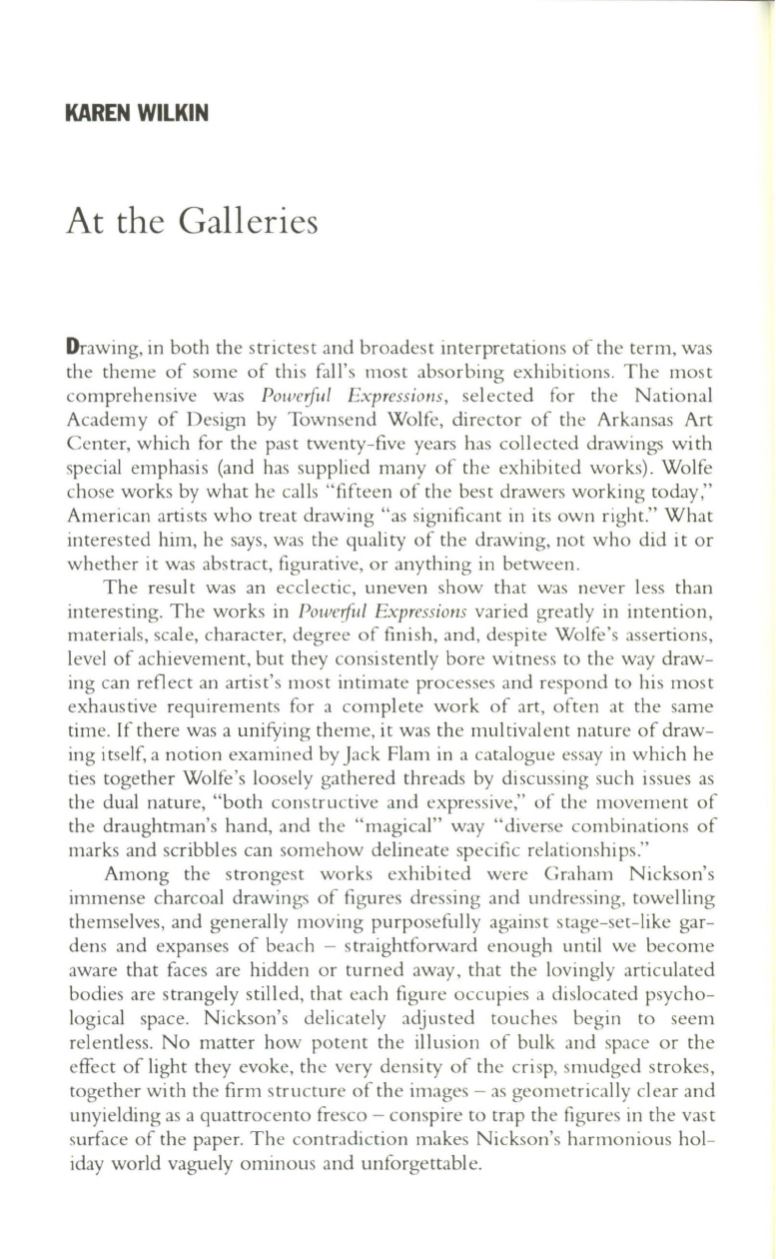
KAREN WILKIN
At the Galleries
Drawing, in both the strictest and broadest interpretations of the term, was
the theme of some of this fall's most absorbing exhibitions. The most
comprehensive was
Po lVeifu I Expressions,
selected for the National
Academy of Design by Townsend Wolfe, director of the Arkansas Art
Center, which for the past twenty- five years has collected drawings with
special emphasis (and has supplied many of the exhibited works). Wolfe
chose works by what he calls " fifteen of the best drawers working today,"
American artists who treat drawing "as significant in its own right." What
interested him, he says, was the quality of the drawing, not who did it or
whether it was abstract, figurative, or anything in between.
The result was an ecclectic, uneven show that was never less than
interesting. The works in
Powciful Expressions
varied greatly in intention,
materials, scale, character, degree of finish, and, despite Wolfe's assertions,
level of achievement, but they consistently bore witness to the way draw–
ing can reflect an artist's most intimate processes and respond to his most
exhaustive requirements for a complete work of art, often at the same
time. If there was a unifYing theme, it was the multivalent nature of draw–
ing itself, a notion examined by Jack Flam in a catalogue essay in which he
ties together Wolfe's loosely gathered threads by discussing such issues as
the dual nature, "both constructive and expressive," of the movement of
the draughtman's hand, and the "magical" way "diverse combinations of
marks and scribbles can somehow delineate specific relationships."
Among the strongest works exhibited were Graham Nickson's
immense charcoal drawings of figures dressing and undressing, towelling
themselves, and generally moving purposefully against stage-set-like gar–
dens and expanses of beach - straightforward enough until we become
aware that faces are hidden or turned away, that the lovingly articulated
bodies are strangely stilled, that each figure occupies a dislocated psycho–
logical space. Nickson's delicately adjusted touches begin to seem
relentless. No matter how potent the illusion of bulk and space or the
effect of light they evoke, the very density of the crisp, smudged strokes,
together with the firm structure of the images - as geometrically clear and
unyielding as a quattrocento fresco - conspire to trap the figures in the vast
surface of the paper. The contradiction makes Nickson's harmonious hol–
iday world vaguely ominous and unforgettable.


